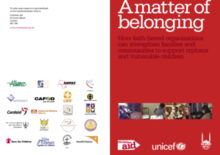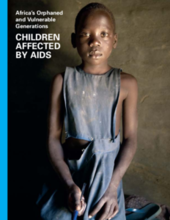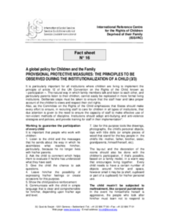Demographic Data
|
Sources: World Bank, UNICEF, UNDP HDR 2015, DHS 2014 |
Displaying 13741 - 13750 of 14391
Contains a set of forward-leaning recommendations for churches and the donor community. Also contains an analysis of the role of faith-based groups in the response, specific case studies, the potential to do more on the ground, and challenges faced by churches.
A guide for faith-based organizations working in developing countries on issues related to orphans and vulnerable children. Contains examples of successful community-based and family support care programs throughout the world that are run by faith-based groups. Discourages the use of institutional care and orphanages.
A 2-page fact sheet that discusses the conditions under which a child may or may not be eligible for adoption. Discusses legal implications and the role of local social services.
A 2-page fact sheet outlining the general priniciples to be taken into account regarding international adoption. Discusses the "adoptability" of children who have not lost their parents, but are abandoned or made vulnerable by poverty.
A tool to encourage donors to fund community programs that keep children in family care, rather than simply funding orphanages. Describes the many strategies being used to invest in community-based care, and contains specific program examples.
This report contains new and improved research and statistical infortmation on orphans and vulnerable children, including what governments, NGO's, the private sector and the international community can do to better respond.
A brief 2-page document that highlights the importance of child participation, post care planning, guarding against abuse, and connecting residential institutions with the surrounding community.
A brief 2-page overview of appropriate residential institution characteristics. Includes information on staffing, and the optimum size of each family-like unit.
A brief 2-page overview of what steps should be taken if and when a social worker or other community worker admits a child to a residential institution.
Guidelines for when and how to make a decision regarding the best interests of the child in the case of emergencies. Includes useful information for addressing unaccompanied and separated children including, temporary and alternative care arrangements, tracing and reunification, and child participation.










